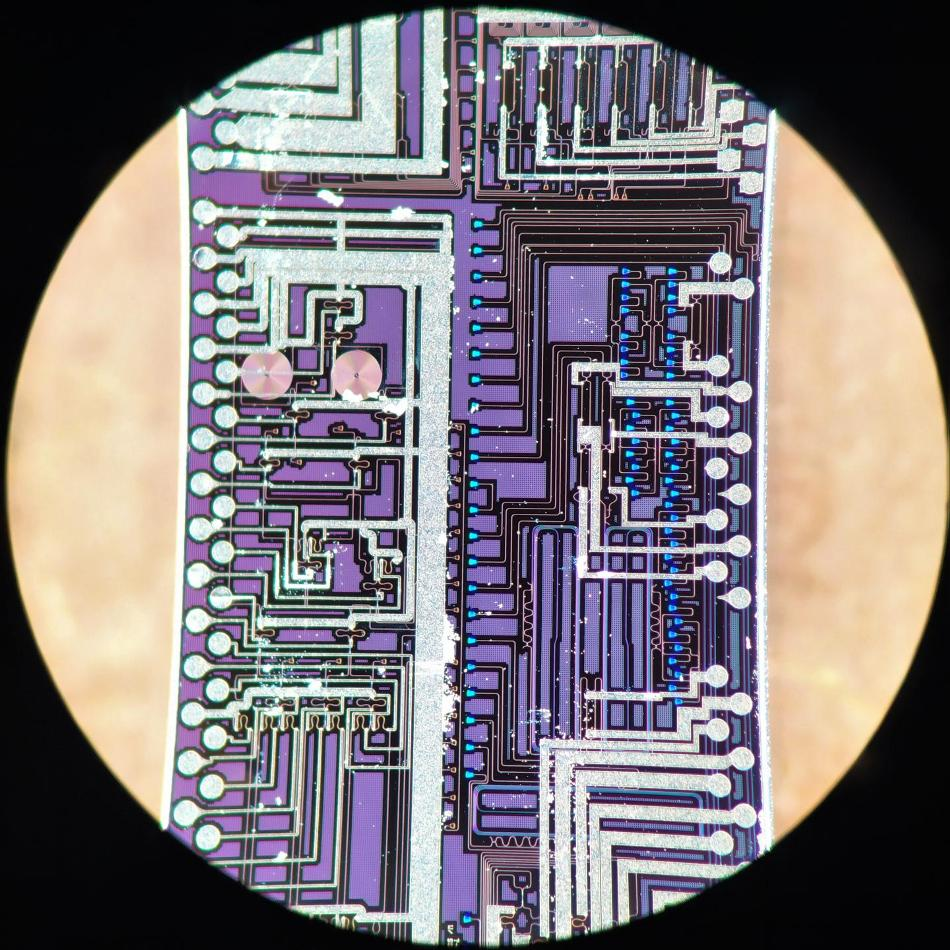May 21 2020
At the University of Bristol, a group of physicists has created the first-ever integrated photon source that can deliver large-scale quantum photonics.
 The silicon photonic chip used in the study to generate and interfere high-quality photons. Image Credit: Stefano Paesani, University of Bristol.
The silicon photonic chip used in the study to generate and interfere high-quality photons. Image Credit: Stefano Paesani, University of Bristol.
The advancement of quantum technologies could potentially have a major impact on science, engineering, and society. Quantum computers at scale can be used to handle unmanageable problems on even the most robust existing supercomputers, with several revolutionary applications, for instance, in the design of new materials and drugs.
Integrated quantum photonics is a potential platform for advancing quantum technologies, thanks to its ability to produce and manipulate photons—single particles of light—in miniaturized complex optical circuits. Taking advance of the long-established CMOS Silicon industry to develop integrated devices allows circuits with the equivalent of thousands of optical fibers and components to be incorporated into a single millimeter-scale chip.
The application of integrated photonics for creating scalable quantum technologies has gained considerable mileage. The University of Bristol is a forerunner in this field, as indicated by a new study reported in Nature Communications.
According to Dr Stefano Paesani, lead author of the study, “An important challenge that has limited the scaling of integrated quantum photonics has been the lack of on-chip sources able to generate high-quality single photons.”
“Without low-noise photon sources, errors in a quantum computation accumulate rapidly when increasing the circuit complexity, resulting in the computation being no longer reliable. Moreover, optical losses in the sources limit the number of photons the quantum computer can produce and process,” added Paesani.
In this work we found a way to resolve this and in doing so we developed the first integrated photon source compatible with large-scale quantum photonics. To achieve high-quality photons, we developed a novel technique—‘inter-modal spontaneous four-wave mixing’—where the multiple modes of light propagating through a Silicon waveguide are non-linearly interfered, creating ideal conditions for generating single photons.
Dr Stefano Paesani, Study Lead Author, University of Bristol
The researcher team based at Professor Anthony Laing’s group in Bristol’s Quantum Engineering Technology Labs (QETLabs) collaborated with researchers at the University of Trento in Italy to standardize the use of such sources for photonic quantum computing in a proclaimed Hong-Ou-Mandel experiment.
This experiment forms the foundation for optical quantum information processing, and the researchers could achieve the on-chip photonic quantum interference of the highest quality ever observed (96% visibility).
The device demonstrated by far the best performances for any integrated photon source: spectral purity and indistinguishability of 99% and > 90% photon heralding efficiency.
Dr Stefano Paesani, Study Lead Author, University of Bristol
Crucially, the silicon photonic device was developed through CMOS-compatible processes in a commercial foundry. This implies that it is possible to integrate thousands of sources easily on a single device.
Financially supported by the Engineering and Physical Sciences Research Council (EPSRC) Hub in Quantum Computing and Simulation and the European Research Council (ERC), the study represents a significant step toward the development of quantum circuits at scale and opens the door for various applications.
We have solved a critical set of noises that had previously limited the scaling of photonic quantum information processing. For example, arrays of hundreds of these sources can be used to build near-term noisy intermediate-scale quantum (NISQ) photonic machines, where tens of photons can be processed to solve specialised tasks, such as the simulation of molecular dynamics or certain optimisation problems related to graph theory.
Dr Stefano Paesani, Study Lead Author, University of Bristol
At present, researchers have formulated a new approach to develop near-perfect photon sources. Thanks to the scalability of the silicon platform, in the coming months, the researchers can incorporate tens to hundreds of it on a single chip. The development of circuits at such a scale will enable NISQ photonic quantum machines to find solutions to industrially-relevant problems beyond the potential of existing supercomputers.
“Furthermore, with advanced optimisation and miniaturisation of the photon source, our technology could lead to fault-tolerant quantum operations in the integrated photonics platform, unleashing the full potential of quantum computers!” added Dr Paesani.
Journal Reference:
Paesani, S., et al. (2020) Near-ideal spontaneous photon sources in silicon quantum photonics. Nature Communications. doi.org/10.1038/s41467-020-16187-8.